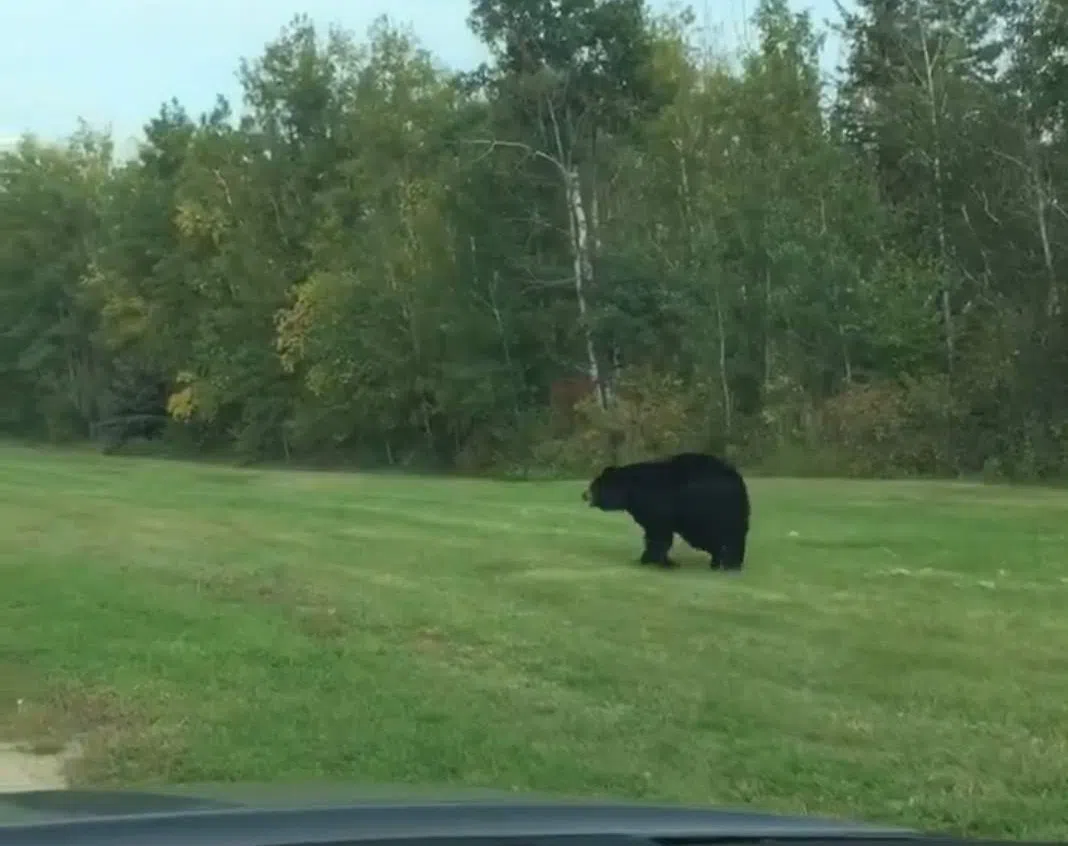
Black bear on Timberline Drive -Jon Tupper
Bear season returns to Fort McMurray as sightings most likely in green spaces
Bear season is underway in Fort McMurray, and Fish and Wildlife Enforcement Services (FWES) say the public has a key role to play in keeping both people and animals safe.
Officers typically handle between 40 and 90 black bears in the region each year. Activity tends to ramp up in May and peaks again in August, when bears are actively searching for food. Most sightings are reported between May and September.
Many of the calls come from residential areas close to green spaces, which provide good cover and access to potential food sources. Officers say a growing number of local bears are becoming conditioned to human food, including garbage, pet food, and bird seed.
FWES is reminding residents that the way waste and attractants are stored can make a big difference. Bear-proof bins must be properly latched and cleaned regularly to reduce odours. Pet food should be kept indoors, and bird feeders should be out of reach from bears.
“Preventing access to food encourages bears to stay in the wild and rely on natural food sources,” said Fish and Wildlife in a written statement. “It also helps reduce property damage and the chances of repeat visits.”
Decisions about relocating or euthanizing bears are made using Alberta’s black bear response guide, which lays out a consistent approach for dealing with conflicts between humans and wildlife.
Residents spending time outdoors are encouraged to carry bear spray, travel in groups, and make noise to avoid surprising a bear. Dogs should be kept on a leash, and people are urged to watch for signs of bear activity such as tracks, droppings, or scratched logs.
Sightings or encounters can be reported to Fish and Wildlife Enforcement Services at 1-800-642-3800.
More information is available at alberta.ca/bears-and-outdoor-recreation.aspx and through the Alberta BearSmart program.











Comments